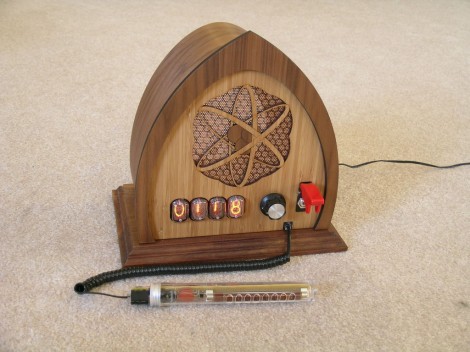
Have a little class when you’re screening for radioactive particles. You can follow the example which [Moustachenator] has set with this gorgeous Geiger counter case.
The business end includes the same Geiger tube we see in all of these projects, but he took the time to solder together a tidy circuit board and housed it in an acrylic tube. it connects to the base unit using a springy telephone handset cord. The laser cut walnut enclosure offers plenty of room for the ATX power supply hidden inside. This feeds the Arduino which runs the system, and provides a powerful source for the Nixie tubes which serve as the display. The attention to detail when it came time to assemble the case is what lends an antique look to the project, even though everything was built from the ground up. Check out the video after the break to see a brief demonstration.
[Thanks Rob via Make]















Nice!
Clever “name”, Dave :)
Thank you!
ATX PSU, Arduino and god knows what else when you only need some NAND gates.
FFFFFFrying tonight…
Use of VFDs would be appropriate here, plus if the radiation really gets bad then the phosphor would start to glow uniformly.
Wow! Beautifully done.
That is a sweet case, very nice.
@bothersaidpooh – Carry on Screaming brother!
Excellent quality build. Love the case.
Do most Geiger counters literally count the number of events (like this appears to do) the tube picks up or do they instead give you more an indication of the rate of events averaged over some period of time? Seeing a count of 1000 might be alarming if it was over a minute but less concerning if it was over a day.
Tools for the modern world. Like!